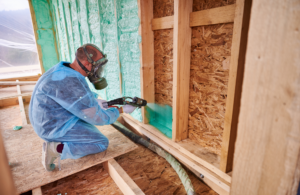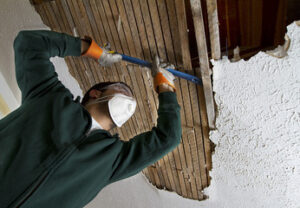Insulation Perth helps control energy costs and improve comfort in homes and buildings. It does this by reducing heating and cooling bills, as well as preventing the generation of pollution associated with electricity and heat.
Loose-fill and sprayed foam are popular choices for insulating walls. They are versatile and can be installed in wall cavities or attics. They are available in a variety of R-Values depending on design and climate zone.

Eco-Friendly
Eco-friendly insulation is a great way to lower your home energy consumption and reduce greenhouse gas emissions. It also provides comfort and improved indoor air quality. Choosing eco-friendly insulation can be challenging due to the many options available, but by comparing products according to their R-value, longevity and price, you can ensure that your choice is an environmentally responsible one.
Most eco-friendly insulation is made from recycled materials and renewable sources. These are often sourced locally, cutting down on transportation costs and environmental impact. They are also more breathable than traditional materials, allowing them to absorb moisture and prevent mould growth. Additionally, they can be easily repurposed for new projects. These materials are also less flammable, reducing fire risk in homes and preventing toxic chemicals from entering the environment.
A number of eco-friendly options are available in the market, including cellulose, sand, wool, and recycled denim. These options are usually a better choice than synthetic or mineral fibre insulation, which contain volatile organic compounds that can damage your health. They are also more environmentally friendly than extruded polystyrene (XPS) and EPS foam, which are made from petrochemicals and emit harmful gases.
Moreover, some green options are made from natural materials such as sheep’s wool and hemp. They are also a greener alternative to cellulose and are easy to install in existing homes. They are also resistant to fire and moisture infiltration, making them ideal for prefabricated homes. In addition, these natural fibers can be a good option for those with allergies or respiratory conditions.
Other green options include spray foam insulation like Icynene, which uses a special oil-based formula that expands to 100x its original size and seals air leaks, thus improving thermal efficiency. It can also be used as a sound barrier. Another green option is cork, which is made from the outer bark of oak trees and has a negative carbon footprint.
Its unique ability to capture carbon makes it a more sustainable option than other eco-friendly insulation. It also has a high R-value, which helps to regulate temperature in your home and reduces your heating and cooling bill. To get a quote on green insulation, visit our quote page. You can request noncommittal quotes from recognised insulation experts for free.
Energy-Efficient
Insulation is the cornerstone of energy efficiency and is the most cost effective way to reduce energy bills. It keeps the home warm in winter and cool in summer and virtually eliminates condensation on walls and ceilings. Adding bulk insulation to an existing home or installing it in new homes creates a more comfortable home year round and pays for itself within five to six years. An energy audit is the best way to determine how much air leakage exists in a home and how well it is insulated.
Several types of materials can be used as insulation but they all have the same basic properties: they interrupt the transmission of heat, electricity, sound and light. They prevent the transfer by separating different conductive parts or coating them in non-conductive material.
The most common types of insulation are fiberglass, rock and slag wool, cellulose and natural fibers, but rigid foam boards and reflective insulation systems are also available. They range in size from tiny bubbles to thick panels, and their insulating value depends on the density of the material. The higher the R-value, the more thermally efficient it is.
Most people don’t realize that their homes are often under-insulated, especially older ones. In fact, it’s likely that up to 15% of a home’s energy is lost through unsealed gaps and poor insulation. Insulating a home correctly will significantly cut energy costs and reduce greenhouse gas emissions.
Insulation works by slowing the movement of heat in and out of a building, so less energy is required to keep it at a comfortable temperature. In addition, it helps reduce the strain on heating and cooling systems, resulting in lower energy bills.
Insulation is made from a variety of renewable and recyclable materials. Some of the most eco-friendly options are cotton, which is recycled denim and wool, which is derived from renewable sheep’s hair. Cellulose insulation, which is a fibrous material, is manufactured from recycled paper and can be biodegradable. Polyurethane insulation has a high R-value and is available in spray foam that uses low VOCs (Volatile Organic Compounds) to minimize off-gassing, reducing environmental impact.
Durable
A material that keeps electricity, heat, or cold from easily transferring through it is an insulator. Wood, plastic, rubber, glass, and other materials are good insulators. Insulation can be made from natural or man-made materials, and is available in different thicknesses. The higher the R-value, the more effective it is.
Besides preventing heat transfer between hot and cold objects, insulation also prevents heat from traveling through walls and floors. It does this by reflecting thermal radiation or blocking it through conduction and convection. Insulation can also block air from escaping homes, and therefore reduces the amount of energy needed for heating or cooling. This minimizes energy consumption, which can lower electricity or fuel bills and reduces carbon dioxide emissions.
The durability of insulation depends on the type of materials used, the installation process, and moisture. In general, insulation has a life expectancy of several decades, though this can be shortened significantly by damage and other compromising factors. For example, mineral wool, a popular form of home insulation, has a lifespan of about 30 years. However, it can be deteriorated by chemicals and is susceptible to mold and mildew.
Some of the most common types of insulation include fiberglass, cellulose, and rigid foam boards. They can range from bulky fiber materials such as rock and slag wool, natural fibers, and fiberglass to more rigid forms of polystyrene (including expanded and extruded polystyrene or EPS and XPS). The differences between these types of insulation are that EPS is made up of small plastic beads fused together, while XPS begins as a molten material that is pressed into shapes.
All three of these types of insulation are Class One Fire Rated, meaning they will not serve as a catalyst for fire. The R-value of insulating materials is determined by their density and the rate at which they restrict the flow of thermal energy. This is a standard measurement that can be used to compare the effectiveness of different materials. This is also known as the lambda (l) value. The R-value of insulation can vary, depending on the thickness and density of the material as well as its temperature.
Affordable
Insulation can reduce your energy bills by keeping the heat inside during winter and outside during summer. It also helps prevent the loss of air quality, reducing the risk of asthma and other respiratory problems. In addition, it protects your family against the cold and hot weather. The cost of insulation varies by material and installation method, but you can save money on your utility bills by scheduling the project during off-seasons when contractors offer discounted rates. It is also a good idea to check for state and local rebate programs to offset the upfront costs of installing energy efficient insulation in your home.
The best insulation materials vary by climate and construction type, but many affordable options include fiberglass batts or rolls, mineral wool, cellulose, and spray foam. Some of these products can be installed without making major structural changes, while others require wall removal or other costly repairs. To choose the right insulation for your home, consider your budget, R-value requirement, DIY capabilities, and current insulation system. You should also consider the impact that the insulation will have on your home’s resale value, as buyers are likely to pay more for an energy-efficient house.
Another benefit of affordable insulation is that it can increase the comfort of your home by maintaining consistent temperatures and reducing drafts. In addition, it can reduce noise levels by acting as a sound barrier. Additionally, it can improve indoor air quality by lowering the levels of dust, dirt, and other pollutants in your living or working spaces.
If you’re building a new home, insulating it before the bricking and cladding stages will help to speed up the build. Insulation is also a good choice for renovations, as it can be fitted between existing studs and joists. In addition, insulation can be installed in wall cavities, behind the drywall, or in ceilings and floors.
Affordable insulation services often prioritize eco-friendly materials, which have a reduced environmental impact. This is because they use less energy to heat and cool a building, which preserves non-renewable resources and lowers the level of greenhouse gas emissions. This, in turn, contributes to the preservation of Stamford’s natural environment and helps reduce global warming and acidic rain.
